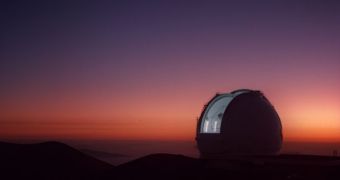Astronomers decided to include the extrasolar planet Gliese 581g in the catalog of potentially habitable worlds. A great deal of controversy still surrounds this alien planet but, for the moment, the evidence that it actually exists appears to outweigh that suggesting it does not.
Operating under the assumption that the world exists, experts say that it has the highest potential for supporting the development of life. Located inside its parent star's (Gliese 581) habitable zone, the planet has a temperature range that allows for the existence of liquid water on its surface.
Interestingly, this is not the only exoplanet orbiting this star to be considered habitable, Gliese 581d is also believed to meet the necessary requirements for receiving this classification. It's interesting to note that, while many stars feature no habitable exoplanets, this one may have two.
At this point, the Habitable Exoplanets Catalog, which is maintained by the University of Puerto Rico at Aricebo, features five worlds – Gliese 581g, Gliese 581d, Gliese 667Cc, Kepler-22b and HD 85512.
One of the issues in the debate regarding the existence of Gliese 581g is that many astronomers believe all planets around this star are in elliptical orbits. Other researchers suggest that the worlds may in fact use circular orbits, which would confirm the signals suggesting the existence of this world.
“This signal has a False Alarm Probability of < 4% and is consistent with a planet of minimum mass 2.2M [Earth masses], orbiting squarely in the star’s Habitable Zone at 0.13 AU, where liquid water on planetary surfaces is a distinct possibility,” Steven S. Vogt explains.
The expert, who is based at the University of California in Santa Cruz, was the leader of the astronomy team that first discovered this planet. He has been defending its existence in front of detractors for several years now, most recently just a month ago.
“The controversy around Gliese 581g will continue and we decided to include it to our main catalog based on the new significant evidence presented, and until more is known about the architecture of this interesting stellar system,” comments the director of UPR Arecibo, Abel Méndez.
Over the past couple of years, the number of alien worlds (of all types) detected around other stars has increased considerably. The total count now exceeds 700 worlds, most of which are Jupiter-sized gas giants, or larger.
The vast majority of these worlds orbit their parent stars at very close range, completing a full orbit in just 3 to 10 days. By comparison, Mercury orbits the Sun once every 88 days. This proximity heats up the surface of these worlds to hundreds or thousands of degrees, Astrobiology Magazine reports.

 14 DAY TRIAL //
14 DAY TRIAL //